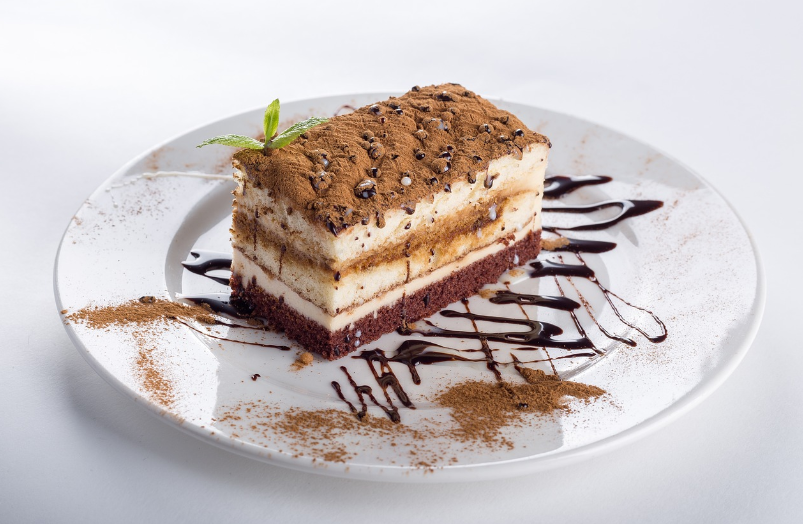How to Create a Modern Logo for Food and Beverage?

Contents
In the competitive world of food and beverage, a compelling and modern logo can set your brand apart. A logo is not just a symbol; it’s the face of your company, a representation of your brand’s identity, and a powerful marketing tool. Creating a modern logo involves understanding your brand, researching your competitors, and using design principles effectively. Let’s dive into the process of creating a modern logo for your food and beverage brand.
Understanding Your Brand
Before you begin designing your logo, it’s crucial to have a deep understanding of your brand. What is the personality of your brand? Is it fun and playful, or sophisticated and elegant? The answers to these questions will guide the design process.
Your brand’s mission and values are also essential. They should be reflected in your logo to create a connection with your target audience. For instance, if sustainability is a key value for your brand, incorporating green elements in your logo can be an effective way to communicate this.
Identifying Your Target Audience: Knowing your target audience is a critical part of understanding your brand. Different demographics respond to different styles and symbols. For example, a younger audience might be drawn to bold, vibrant colors, while an older audience might prefer a more classic and understated design.
Consider the cultural context of your audience as well. Certain colors and symbols may have different connotations in different cultures. By understanding your audience, you can create a logo that resonates with them and reflects their values and preferences.
Researching Your Competitors
Researching your competitors is another crucial step in the logo design process. This doesn’t mean copying their designs, but rather understanding what works and what doesn’t in your industry. Look for common themes and trends in your competitors’ logos. What colors, shapes, and fonts are they using? How do they communicate their brand’s personality and values?
By analyzing your competitors’ logos, you can identify gaps and opportunities. Perhaps there’s a color or symbol that’s underused in your industry, or a trend that’s becoming outdated. Use this information to create a logo that stands out in the market.
Creating a Mood Board: A mood board can be a helpful tool in your research process. It’s a collection of images, colors, fonts, and other elements that inspire you and represent the look and feel you want for your logo. You can include logos from other industries, artworks, photographs, or any visual element that sparks your creativity.
Creating a mood board can help you visualize your ideas and establish a clear direction for your design. It can also be a useful reference throughout the design process to ensure your logo stays consistent with your brand’s identity.
Designing Your Logo
Now that you have a clear understanding of your brand and your competitors, it’s time to start designing your logo. There are several key elements to consider: color, shape, typography, and symbolism.
Color is a powerful tool in logo design. It can evoke emotions, convey messages, and attract attention. Choose colors that reflect your brand’s personality and resonate with your target audience. For food and beverage logos, warm colors like red and orange can stimulate appetite, while cool colors like blue and green can convey freshness and healthiness.
Choosing the Right Shape: The shape of your logo can also communicate a lot about your brand. Circular shapes can convey a sense of community and unity, while angular shapes can suggest stability and strength. Consider the message you want to send with your logo and choose a shape that supports it.
Typography is another key element of logo design. The font you choose can express your brand’s personality and set the tone for your brand. For a modern look, consider clean, minimalist fonts. If your brand is more traditional, a serif font might be a good choice.
Using Symbolism Effectively: Symbolism can add depth and meaning to your logo. For example, a leaf can symbolize freshness and sustainability, while a crown can represent luxury and quality. Be careful, though, not to make your logo too complex. A modern logo should be simple and easily recognizable.
Finally, remember to design your logo with versatility in mind. It should look good in different sizes and on different platforms, from business cards to billboards to social media profiles. A versatile logo will ensure your brand is consistently represented across all touchpoints.
Testing Your Logo
Once you’ve designed your logo, it’s important to test it. This can involve showing it to a small group of people and asking for their feedback. What emotions does the logo evoke? What values does it communicate? Is it memorable? The answers to these questions can help you refine your design and make it more effective.
Testing your logo in different contexts is also important. How does it look in black and white? How does it look when it’s scaled down? By testing your logo, you can ensure it works well in all situations and represents your brand effectively.
Conclusion
Creating a modern logo for your food and beverage brand involves understanding your brand, researching your competitors, and using design principles effectively. It’s a process that requires creativity, strategic thinking, and attention to detail. But with the right approach, you can create a logo that stands out in the market, resonates with your target audience, and helps drive your business success.
Ready to bring your food and beverage brand to life with a modern logo that captures your unique essence? With Boon, you’re just a few clicks away from a custom logo designed by the power of Artificial Intelligence to match your specific preferences. Whether you’re looking to engage users, tell a compelling brand story, or strengthen your business, Boon is here to help. Let’s make a logo! and watch your brand flourish.

As our Chief SEO & Branding Strategist, Robert Ellison is a digital marketing visionary with over 25 years of experience transforming brands through smart, data-driven SEO and impactful storytelling. Known for his expertise in aligning technical SEO with authentic brand narratives, he leads our team in creating strategies that boost search rankings while building strong, sustainable brand identities. A trusted advisor and frequent industry speaker, Robert combines deep technical knowledge with creative insight, helping our clients not only reach the top of search results but also genuinely connect with their audiences.
